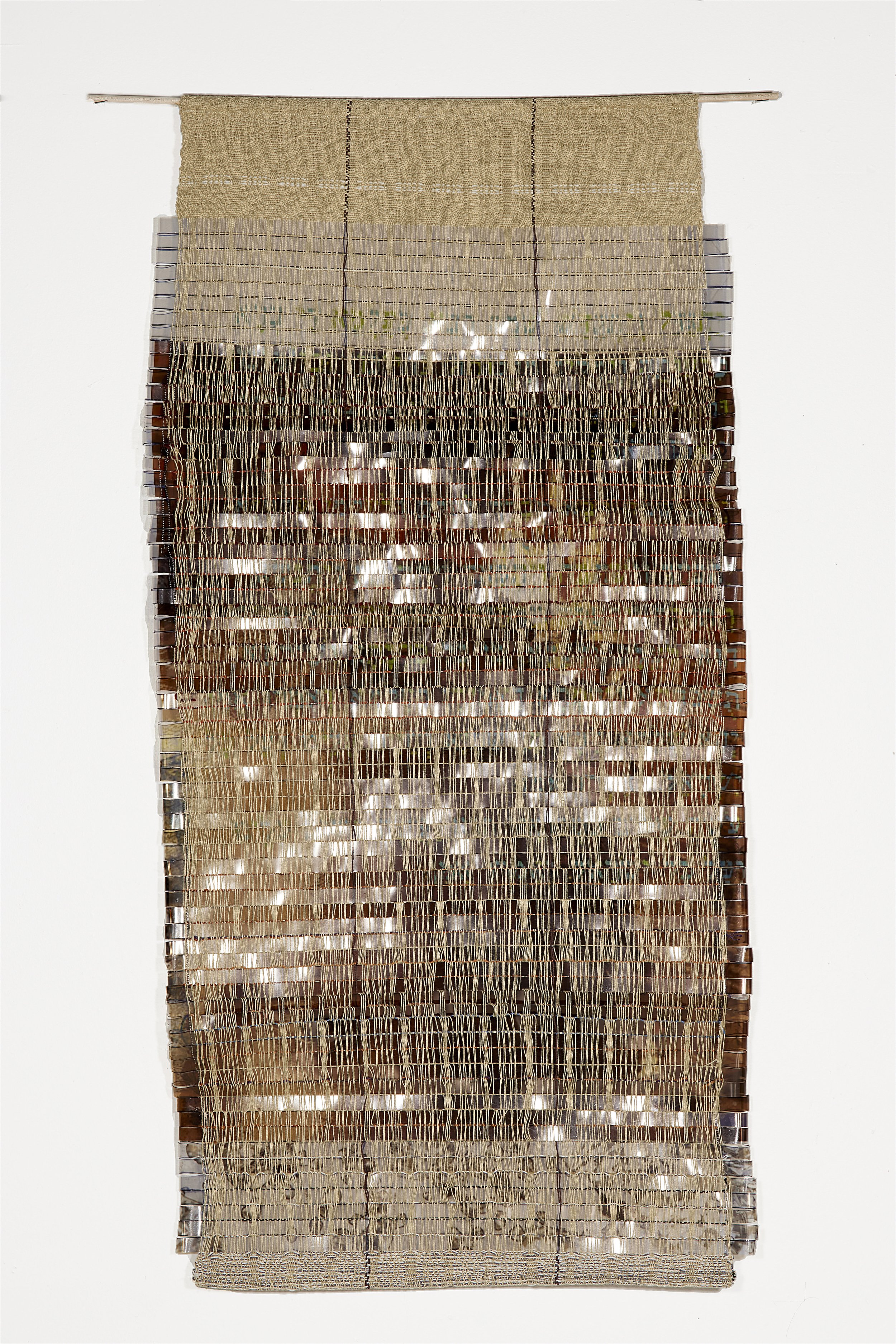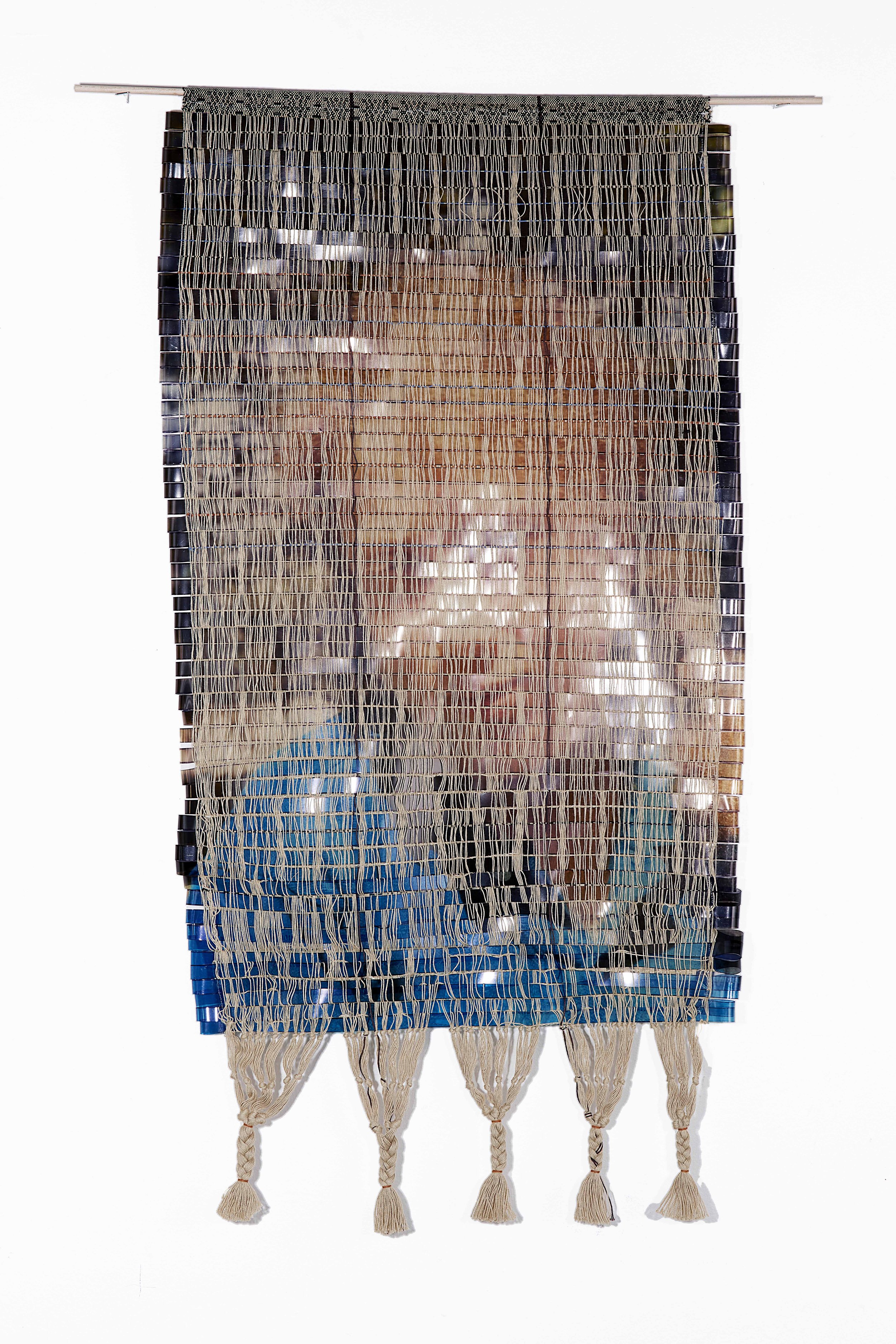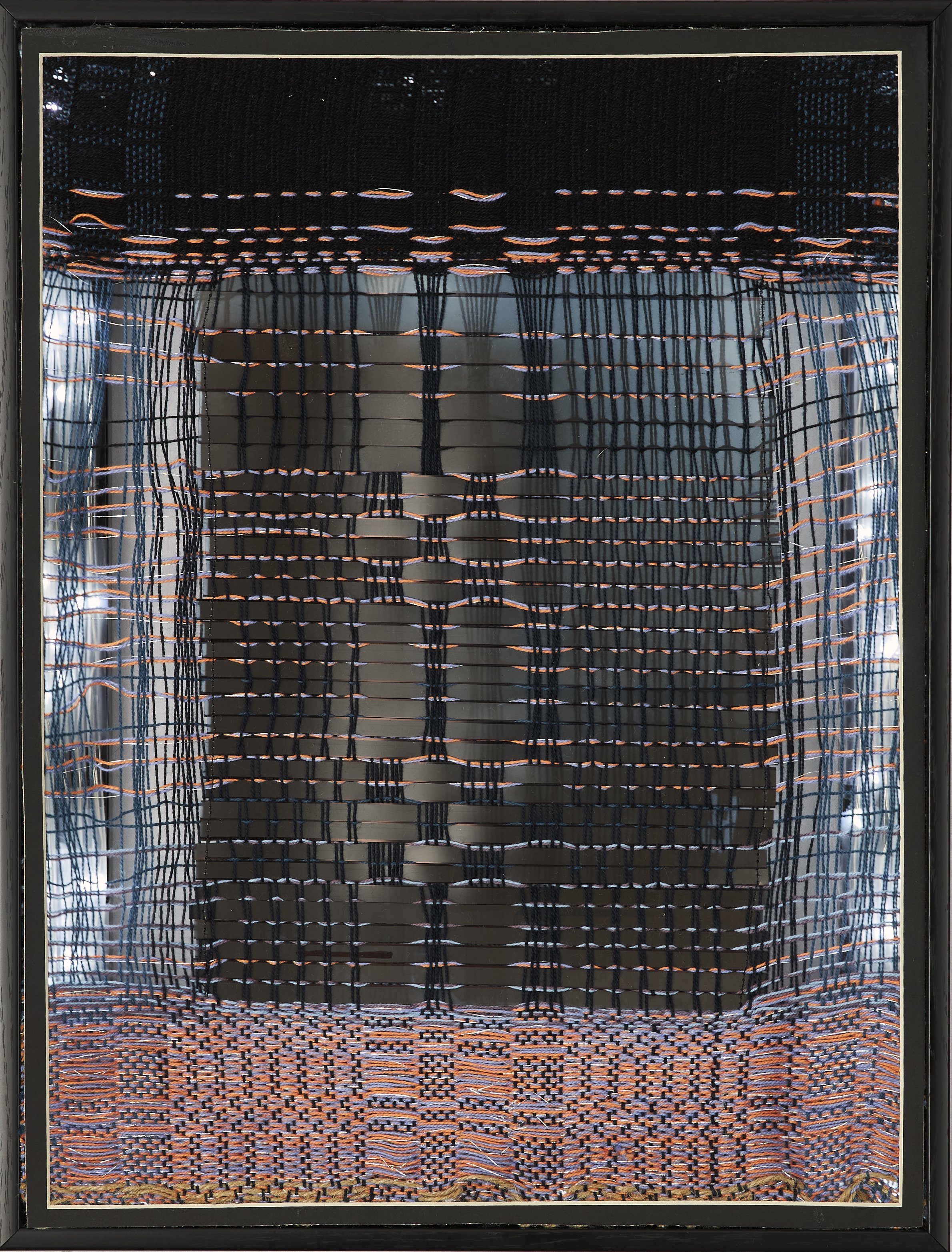Amadi Greenstein
Amadi Greenstein is a multimedia artist and textile designer based in Palo Alto, California.
Amadi Greenstein is one of ArtConnect’s Artists to Watch '23
Amadi Greenstein creates a range of work based on her practices of weaving, and explores her questions of identity and philosophical theories of the Sublime.
Textiles encompass life through the sentimental value of memories, materials, and evolves our ways of living. They sustain us from the moment we are born to the time of death, and our remaining cloth becomes memories of our existence. Amadi’s textile work illustrates and explores her dreams, psychological theories, and personal narratives. She weaves experimentally with conventional and unconventional materials of transparency film, found x-rays, along with natural and synthetic fibers to convey impressions of nostalgia through light, pattern, and texture.
Amadi connects her narratives from notions of grief, serenity, comfort, and remembrance in her process of making. Consequently, she unfolds uncertainties about her cultural and religious identities during her upbringing as an adopted child. Perceptions of disarray and isolation arise in areas of Amadi’s textiles. In the methodology of her expressive practice, weaving performs as a health-giving, restorative experience, and uses ideologies of mindfulness. These methods create a strong mental understanding between the mind and body. Along with this, she philosophically challenges the Sublime by intertwining psychological and physiological sensations, from the use of color and texture. Amadi focuses to apply these tactile details in her textiles to abstractly communicate the narratives and emotions that connects to the ideology of her work.
ArtConnect asked the winning artists to share with us a glimpse into their creative life to get a sense of their personal inspiration and artistic process.
How would you describe your artistic style and what inspires your work?
I would describe my artistic style as mellow and gloomy with a hint of nostalgia. There is a contrast between luster and shadow that defines the style of my work. Experimenting with transparency film and found objects in my weaving practice has developed my style and aesthetic.
In addition to that, gently blending and pairing color is another element that defines my work artistically. Much of my inspiration originates from my memories from my childhood upbringing, challenging life experiences, and vivid dreams. Film and digital landscape photography inspires also inspires me a lot. They consistently inspire the colors, woven patterns, and textures in my body of work.
“Amadi Greenstein uses weaving as a spiritual and emotional practice. Mixing personally charged textiles with unconventional materials like transparency film or founds x-rays, Greenstein creates textile patterns that tell of her personal background. She destroys the source images, which include her birth certificate, photographs of her mother or her childhood home, and reassembles them — re-appropriating the narrative through the process of weaving. The images become distorted and pixelated, thus transcending their original meaning to explore notions of grief and memory.”
How has your work evolved over time?
My original creative background was in fashion design and photography. In the beginning of my fine art practice, I primarily focused on creating yardages of textiles that could be cut and sewn into garments. Around that time, my mind was coming from a fashion design perspective, meaning to me, that a textile needs to be made into a garment, rather than a textile being left as is and viewed as an expression of art.
The evolution of my work has changed overtime because my mindset of what my artwork is and can be has evolved. After that change, I decided to embrace more personal emotion and vulnerability in my work while also finding the right materials that could embody my artistic style. I’ve refined my experimental techniques in terms of working with fiber and transparency film. From transferring my photographs and digital art onto transparency film, to cutting it up and piecing it back together, strip by strip in the action of weaving. I am able to have more control in what I want to create whether it’s an abstract or more photographic piece.
What message or emotion do you hope to convey through your art?
I hope to convey a range of emotions through my art. Emotions of grief, depression, isolation, alienation, nostalgia, curiosity, vulnerability, content and bliss.
Can you talk about a specific piece or series that holds a special significance to you?
One piece that holds significance to me would be “Ghost Home of Childhood”. The work stands as a representation of the my childhood home in Lorton, Virginia, which unfortunately no longer exists. The piece translates as my last goodbye to my childhood home primarily through the patterns, colors, and textures embedded in the work.
Beyond mourning the loss of both my mother and my home, there is a decay of memories that existed within this space. Included with the sadness there is a creation of life that is celebrated. This is communicated through the idea of pixelated memory and transitional uses of color. The color story for this work is reflected from the inspiration of Claude Monet's Woman with a Parasol from 1875 and E.H. Shepard's cover illustration for The House at Pooh Corner from 1970, which both held significant meaning to my childhood upbringing. I used these colors to tell the narrative of passed time from childhood to adulthood, innocence to wisdom, and from exchanged wisdom to the end of a life my mother and I shared together.
What does this work aim to touch on?
This work aims to touch on the experience of mourning the loss of childhood innocence while also celebrating the growth, evolution, and decay specifically between mother and daughter relationships.
What is your process for creating a new piece of art?
When I am making a new piece I first think of who or what I want as my inspiration. Soulfully following my inspiration, I try to convey the concept or emotions it brings towards me, which then inspires my color story. After, I then find a weaving pattern that I think would work cohesively with the color story, emotions, and concept.
I design the new textile piece by figuring out its measurements, draw down the weaving pattern, and then transfer all of that information on to my warping board and loom.
During my actions and processes of weaving I kind of just get into a good flow with the pattern sequence I’m using to weave the pattern for the project. During that process I improvise my techniques and where to place each color. Most of my pieces are quite large so I don’t know what they look like fully until I take them off the loom. There’s kind of a beauty to that in my opinion.
How do you stay motivated and inspired in your artistic practice?
Seeing other artist’s work on social media and in galleries, museums, and unconventional venues always inspires my artistic practice. I love becoming inspired by artists who work in a different medium than I do.
When I see their work, it motivates me to engage and think about how I can challenge myself and push the boundaries of my own work. I still use Tumblr as a source of photo inspiration for my work as well. Some of the aesthetics that still exist on that social media platform helps me develop the overall mood for my new pieces.
How do you balance your artistic career with the business aspect of being an artist?
I try to compartmentalize time I have each week for both my artistic career and the business aspects. I think the most important thing is to make sure as an artist to set aside special time for creating and making.
I am the type of person who likes to plan so I tend to time manage myself between being an artist and the business aspect. If I am making a new piece, it really helps me to figure out some of the business aspects while I am in the middle of the project.
How do you see your work fitting within the larger context of contemporary art?
I see my work fitting in with the larger context of contemporary art by it visually emerging and being an independent type of style. I see my methods and creative techniques being so intriguing that it can blend well with contemporary art. I also see my work connecting to a broader audience through it’s deep emotions and concepts that I hope people can feel or relate to.
What advice do you have for aspiring artists who are just starting out in their careers?
It’s extremely important to set time aside for your artwork. Keep making and creating even if it’s with a medium or material you’re not familiar with. It helps to stay motivated and inspired when you challenge yourself and your artistic practice. So, overcome those creative obstacles as much as you can because it will make you stronger as an artist. You never know what you might discover within yourself when you dedicate to your work.
See more of Amadi’s work







